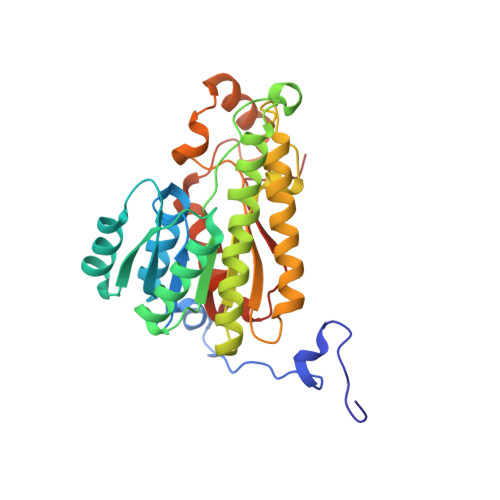Oligomeric interactions maintain active-site structure in a noncooperative enzyme family.
Li, Y., Zhang, R., Wang, C., Forouhar, F., Clarke, O.B., Vorobiev, S., Singh, S., Montelione, G.T., Szyperski, T., Xu, Y., Hunt, J.F.(2022) EMBO J 41: e108368-e108368
- PubMed: 35801308
- DOI: https://doi.org/10.15252/embj.2021108368
- Primary Citation of Related Structures:
7DLD, 7DLL, 7DLM, 7DMG, 7DN1, 7VYQ - PubMed Abstract:
The evolutionary benefit accounting for widespread conservation of oligomeric structures in proteins lacking evidence of intersubunit cooperativity remains unclear. Here, crystal and cryo-EM structures, and enzymological data, demonstrate that a conserved tetramer interface maintains the active-site structure in one such class of proteins, the short-chain dehydrogenase/reductase (SDR) superfamily. Phylogenetic comparisons support a significantly longer polypeptide being required to maintain an equivalent active-site structure in the context of a single subunit. Oligomerization therefore enhances evolutionary fitness by reducing the metabolic cost of enzyme biosynthesis. The large surface area of the structure-stabilizing oligomeric interface yields a synergistic gain in fitness by increasing tolerance to activity-enhancing yet destabilizing mutations. We demonstrate that two paralogous SDR superfamily enzymes with different specificities can form mixed heterotetramers that combine their individual enzymological properties. This suggests that oligomerization can also diversify the functions generated by a given metabolic investment, enhancing the fitness advantage provided by this architectural strategy.
Organizational Affiliation:
Key Laboratory of Industrial Biotechnology of Ministry of Education and School of Biotechnology, Jiangnan University, Wuxi, China.















